New York bagels for breakfast!
We ate them sitting in the middle of Times Square.
New York Public Library
We wondered around a bit, but our main destination here was the Children’s room. There, in the middle of little tables and colorful books, stood a glass case with the real Winnie the Pooh, Piglet, Eeyore, Tigger, and Kanga! These toys were given to Christopher Robin Milne and eventually inspired his father, A.A. Milne, write the Winnie the Pooh children’s books. My first reaction upon seeing the toys was that Piglet was indeed a “Very Small Animal.”
Being a resident of Boston and a proud wife of a Harvard Medical School alumnus, I cannot resist mentioning that the buildings on the Harvard Medical School quad along Longwood Avenue largely owe their magnificent marble facades to no other then the New York Public Library. The original plans for HMS intended the buildings to be built of brick and granite. However, one of the bidders offered to substitute marble, which was originally intended for the construction of the New York Public library. The library architects rejected it, because this marble was not "entirely free of color." Thus the marble was available at a discounted price, and eventually used for the construction of the Harvard Medical School.
The Cloisters
Brooke and I thought we were going to the Cloisters. We eventually learned that it is mandatory to visit Ulysses Grant’s Tomb before arriving at the Cloisters. Alas, this mausoleum, the largest in North America according to Wikipedia, was closed.
Luckily, the Cloisters hours of operation were a lot more sensible. We spent a couple of hours wondering through Gothic and Romanesque halls and chapels, admiring Medieval tapestries, wood carvings, alter pieces, and even looking at some Medieval plants. The unicorn tapestries were my favorite part of the museum. They are the one thing I remember well from my only previous visit here back in 1994. I cannot decide whether it is neat or insane that researchers have properly identified 85 species of the 101 different plants depicted in the “The Hunters Enter the Woods” tapestry. Still no one knows who, why and how commissioned these tapestries.
“Sleep No More”
I do not know if it is appropriate to call what we saw a play or a show or something else. I heard the term “immersive” used to describe the experience. Action took place in a warehouse in Chelsea, where 4 or 5 floors were transformed into a labyrinth of rooms. Each room has been painstakingly decorated, creating living spaces as well as offices, storage, forests, a cemetery, a hospital ward, etc. Everyone explores the warehouse. Audience is masked, the actors are not. I spent some amount of time dashing after different actors trying to put together the story line and some of time just exploring the rooms.
The Brooklyn Bridge
We power walked to the middle of the bridge and back. This visit did not turn out to be one of the more memorable ones for me, as the bridge was somewhat crowded. Plus, unlike the Hunters I really do prefer to stroll.
A bit of walking around the Financial District
Nick really wanted to see a specific building near Wall Street, because many significant historical events took place there, including George Washington inauguration as the first president of the United States in 1789. We eventually found the building and spent a few minutes on its steps, as the building itself was closed. Later, I looked up the building, since at the time none of us actually knew any details about it. According to Wikipedia, the building where the first United States Congress met, and where George Washington was actually inaugurated in 1789, was built in 1700, eventually named Federal Hall, and demolished in 1812. Another building erected on the same site in 1842 was eventually designated as the Federal Hall National Memorial. So in the end, we visited the site where George Washington was inaugurated, not the building. Though just to be fair, the newer (though hardly new) building had its own important moments in history, such as being the first Customs House in the country
On our way to the Federal Hall National Memorial, we stopped by St. Paul’s Chapel. The church, completed in 1766, was designed in the then fashionable Georgian style and modeled after James Gibbs’ St. Martin-in-the-Fields Church in London’s Trafalgar Square. (Another church modeled after St. Martin-in-the-Fields is King’s Chapel right here in Boston
Metropolitan Museum of Art
Due to our bus schedule, we had about 45 minutes to spend in the museum, so we split up. After a quick look at the Renaissance velvet exhibit (which included no more then 6 or 7 textiles), I headed to the French Period rooms. In the process I became completely distracted by German porcelain. The figurines of a lion and a lioness particularly caught my eye.
Reading the sign confirmed my suspicions that these two enormous porcelain figures were “part of an extraordinary commission to produce large-scale animals in porcelain” and were intended to decorate the Japanese Palace in Dresden.
It just so happens that MFA's collection of these large porcelain animals is "one of the largest in the world outside Dresden."
Out of the figures on display, the Macaw is my favorite.
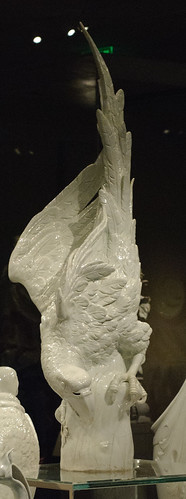 | 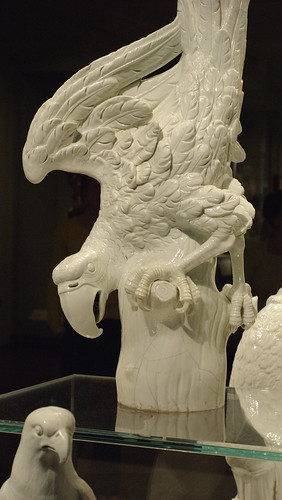 |
| Boston's Museum of Fine Arts Macaw Germany, Meissen manufactory, about 1731 Modeled by Johann Joachim Kandler (German, 1706-1775) | |
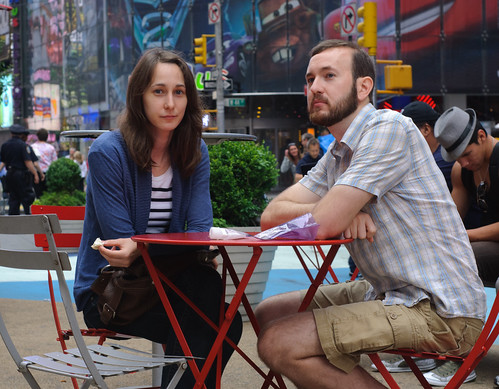
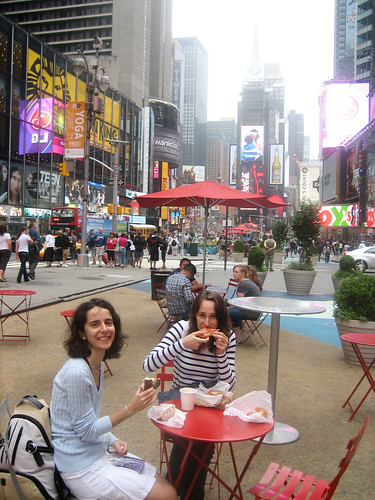

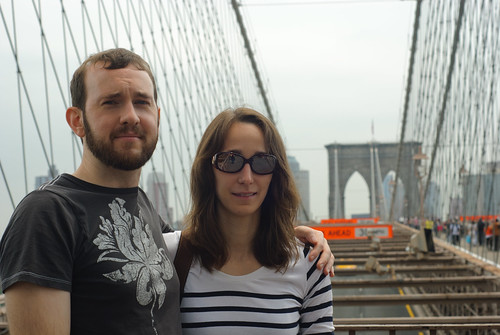
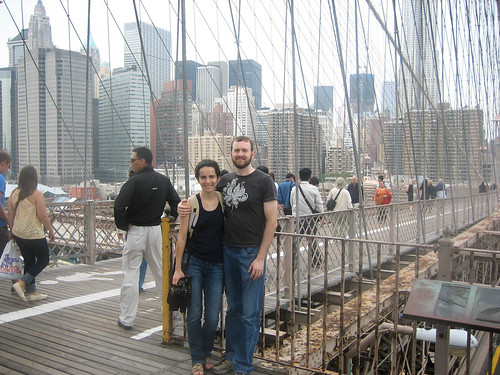
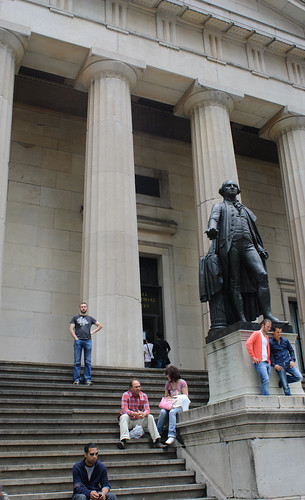


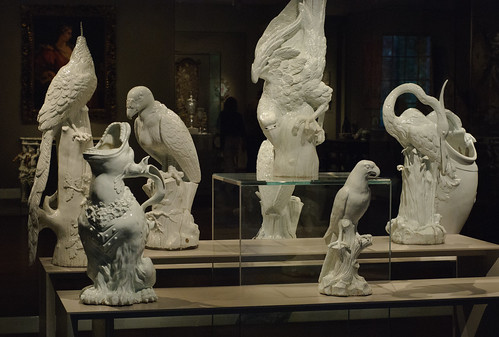




No comments:
Post a Comment